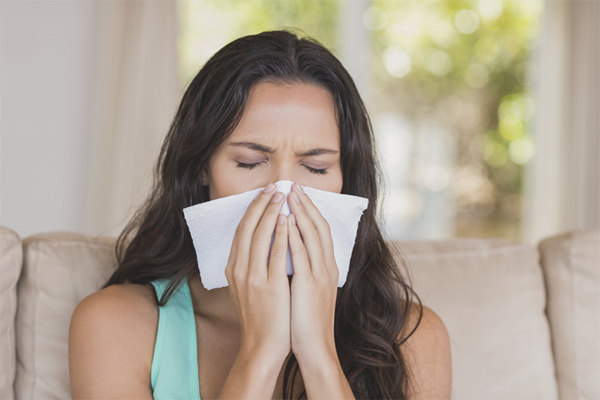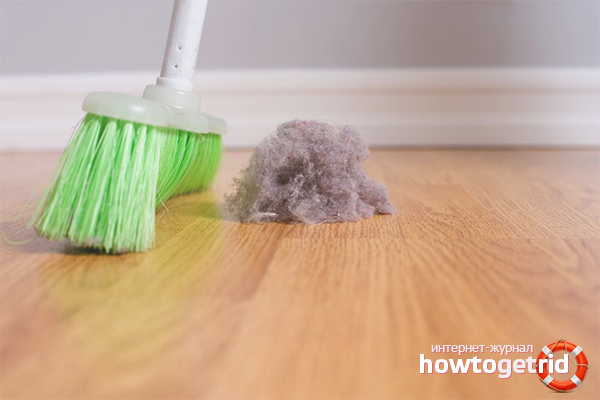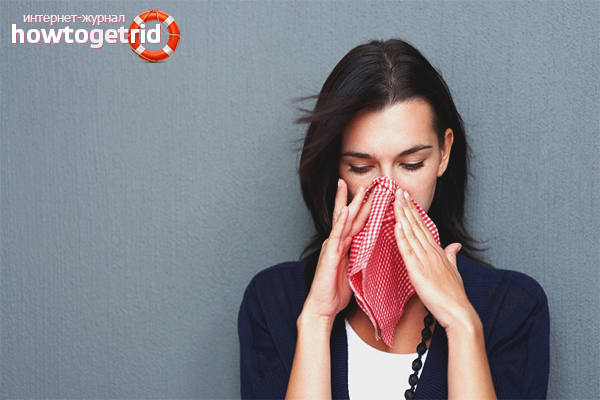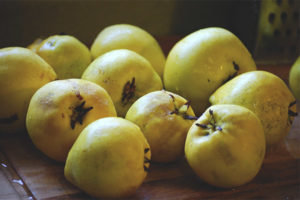The content of the article
Modern doctors admit that every year allergy sufferers become more and more. This is due to the development of technology and remedies. That is, we harbor a child from infancy from various external pathogens and provide him, thereby, a disservice. The body does not encounter various particles, does not learn to resist them. As a result, the child develops allergies. Living the child in a sterile environment is very dangerous for his health and immunity. It has long been proven that people living in rural areas suffer from allergies several times less. But urban residents are subject to allergic reactions much more. Today we will talk about dust allergy - how and why it manifests itself, what to do with it and how to protect yourself from an allergen.
Symptoms of house dust allergy
Allergies are difficult to diagnose because parents often associate coughing, snot and sneezing with the cold of the disease. So, how does dust allergy manifest itself?
- Nose. Very often, the manifestation of allergy begins with the banal course of the nose. The discharge is clear and fluid. Rhinitis is manifested by frequent sneezing, nasal congestion, itching and soreness in the nasal passages.
- Eyes. In some cases, an allergic reaction is manifested by conjunctivitis. At the same time, there is an active tearing, the whites of the eyes become red, the eyes pinch, itch, the eyelids swell, the person feels a burning sensation, cannot look at the light. Sometimes a patient may be diagnosed with a temporary decrease in visual acuity.
- Leather. Allergies are often manifested by various skin rashes that can itch, swell. Redness of some parts of the epidermis is observed, blisters may appear.
- Lungs. Most often, dust allergy is manifested precisely by coughing, wheezing, and bronchial spasms. If you do not take timely action, allergic cough develops into asthma, which is much more difficult to deal with.
Allergic manifestations of house dust can be individual or cumulative. Someone allergy manifests itself only cough, well, and someone suffers from the whole complex of these symptoms. But where does the disease come from?
Why is a person allergic to dust?
In general, dust is not a separate substance. These are accumulations of various particles, which include microscopic pieces of the epidermis (humans and animals), dead insects, remnants of their excrement, particles of fibers of tissues and hairs, pollen from plants and many other components that form home dust. But most often an allergic reaction occurs if there are dust mites in the house that feed on uncleaned dust. Dust mite can live everywhere - in books, pillows, blankets, textiles, etc. High humidity and heat are the main conditions for the development and reproduction of these parasites. The allergic reaction of a person arises not because of the tick itself, but because of the products of its vital activity.
Many parents can not distinguish the allergic nature of the disease from other diseases with characteristic signs. If the child coughs and sneezes, and mucus flows from his nose, do not rush to treat him for a cold. Pay attention to his throat - as a rule, with allergies the throat does not redden, and with viral diseases almost always inflames. Next, pay attention to the temperature - if it has risen, it is most likely ARVI. The allergy goes away with a change in location, that is, the symptoms subside as soon as you leave the house. Often, if you are allergic to dust, the symptoms worsen in the morning and evening when the person is in bed. If all the symptoms are very blurred, and you can not be sure of the proposed diagnosis, be sure to consult an allergist. He will prescribe a blood test to Immunoglobulin E. If allergic reactions occur in the body, this indicator will be significantly overestimated.You can also test for allergens and identify what the reaction might be - dust, pollen, animal hair, or something else.
How to get rid of the allergen
The most important thing in the treatment of allergies is getting rid of the main pathogen, in our case - dust. It can accumulate anywhere. To reduce the symptoms of allergies, you need to carry out general cleaning.
- Clean the apartment from any manifestations of dust. It can accumulate in curtains and drapes, in bookcases, on carpets, in pillows and soft toys. If possible, get rid of carpeting and toys - they serve as excellent accumulators of dust. All textiles must be carefully washed at high degrees.
- Be sure to use the professional services of disinsectors to get rid of ticks - to bring them yourself is very difficult, almost impossible.
- Thoroughly rinse all hard surfaces. By the way, wet cleaning should be done daily.
- Change pillows and blankets once a year, and a mattress once every 3-4 years. Indeed, one gram of mattress dust can contain thousands of ticks.
- Be sure to install humidifiers and air purifiers - they will help get rid of flying dust in the air.
- Change your regular vacuum cleaner to a wash model. The fact is that the vacuum cleaner sucks in only large particles of dust and debris, and small, on the contrary, throws it into the air, spreading it all over the apartment. But water vacuum cleaners perfectly collect even the smallest dust, doing wet cleaning at the same time.
- Change bed linen at least once a week, wash it at high temperature. In winter, bring pillows and blankets outside to kill possible ticks with frost. In summer, on sunny days, leave pillows in direct sunlight. Bedding must be ironed before use.
- Choose synthetic fillers for pillows and blankets that will not be food for ticks, like feathers or down.
- Timely clean the cartridges in the air conditioner, invite the wizard for preventive cleaning.
- If there are dry flowers at home, you should also get rid of them. Books should be kept in plastic containers that can be wiped from dust.
These are simple but irreplaceable rules.which will help you reduce the chance of an allergen exposure to the human body. But what if an allergic reaction is in full swing? How to help the patient?
Allergy Treatment - First Aid
The first thing that can come to mind is taking an antihistamine drug. Indeed, these tools will help quickly and efficiently get rid of allergic manifestations. However, this is not always enough, especially if the reaction is violent.
- When rhinitis is important to clear the nasal mucosa from microparticles of dust. To do this, it is most effective to wash the nasal passages with warm salt water. This can be done with a small kettle, a syringe, or simply draw in liquid from the palm of your nostrils. If the nose is itchy, sneezes and there is no time to prepare a solution, you can use ready-made means for washing the nose, for example, Aqualore. Nasal vasoconstrictor drugs that not only open the breath, but will be effective against the allergic nature of the common cold. Among such funds can be distinguished Vibrocil.
- Conjunctivitis can be cured with simple cold tea.Wash your eyes or apply wet tea bags to them. This will relieve itching and redness, relieve from tearing and burning. In difficult cases, when there is an acute manifestation of conjunctivitis, antibacterial drops - Levomycetin can be dripped into the eyes. The composition will eliminate the formation of purulent lumps after sleep. If allergies caught you on a visit and you have nowhere to take iced tea, just use special drops to help relieve inflammation, redness and itching. Among them are Okumetil, Allergodil, Vizin, etc.
- Rash. If an allergy is manifested by a skin rash, taking an antihistamine will help you stop the itch. The main thing is not to scratch the skin, so as not to injure it and not bring infection. To relieve swelling and itching will help hormonal ointment - Hydrocortisone. It quickly removes puffiness and redness, cools and soothes. Fenistil, Flutsinar, Psilo-Balsam, etc. will help to get rid of severe itching. If there are no suitable ointments and gels on hand, just take a cold shower - this will help you to get rid of the itch until the medicine for allergies begins to work.
- Cough. This is the most serious and dangerous manifestation of an allergic reaction.Indeed, in case of bronchial spasm or an asthma attack, a person may suffocate if he is not given adequate assistance in time. It is necessary as soon as possible to stop the contact of the patient with the allergen, sit down and calm him down. After all, nervous overexcitement and anxiety increase the attack. The patient should sit on a chair and tilt the head back slightly, a pillow is placed under the head. In this position, the lumen of the larynx is as open as possible, breathing is so much easier. Be sure to give the person an antihistamine, provide fresh air - open the windows. If the attack did not occur for the first time, there is probably an inhaler in the bag or patient’s pocket for expanding the bronchi, in the form of a spray. As a rule, it is Salbutamol, Bricanil, etc. You can make a shot against an asthma attack - Ephedrine. The injection will act much faster. If the patient is not getting better, be sure to call the ambulance team.
Along with any ongoing activities required antihistamine drugs. Among them Zirtek, Zodak, Diazolin, Allergid, Lordes, Cetrin, etc. There are a lot of them, by trial and error you will find the one that will help you.
Allergy to house dust - a serious disease that can not be closed on the eyes, constantly taking an antihistamine. Over time, the body's sensitivity to the drug will decrease, getting rid of the attacks will be more difficult. The most dangerous complication of allergy is the development of asthma, asthma attacks, up to and including death. It is necessary to be treated by an allergist, perhaps taking course medications to reduce the intensity and frequency of attacks. And, of course, eliminate contact with house dust. Be alert, treat allergies, do not leave her any chance of survival!
Video: allergy to household dust













To send